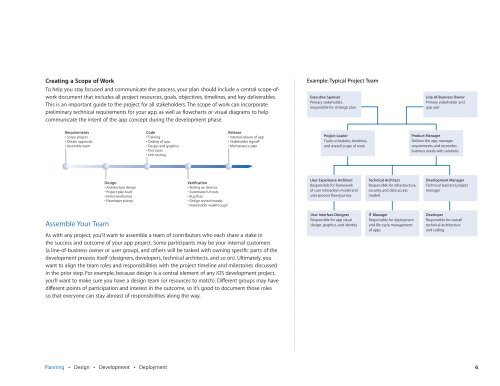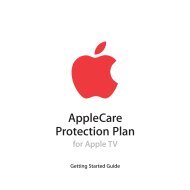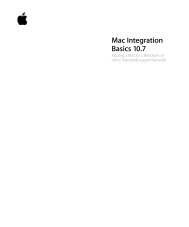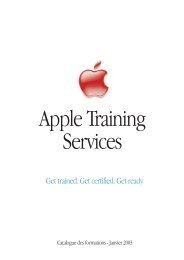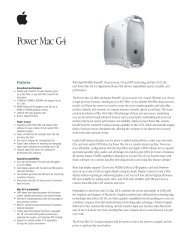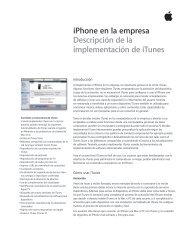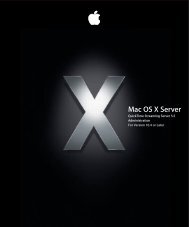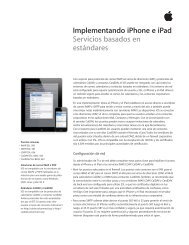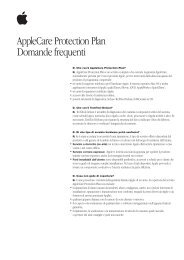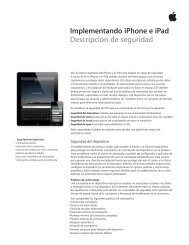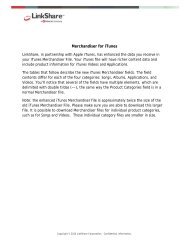In-House App Development Accelerator Guide - Apple
In-House App Development Accelerator Guide - Apple
In-House App Development Accelerator Guide - Apple
You also want an ePaper? Increase the reach of your titles
YUMPU automatically turns print PDFs into web optimized ePapers that Google loves.
Creating a Scope of Work<br />
To help you stay focused and communicate the process, your plan should include a central scope-ofwork<br />
document that includes all project resources, goals, objectives, timelines, and key deliverables.<br />
This is an important guide to the project for all stakeholders. The scope of work can incorporate<br />
preliminary technical requirements for your app, as well as fl owcharts or visual diagrams to help<br />
communicate the intent of the app concept during the development phase.<br />
Requirements<br />
• Scope project<br />
• Obtain approvals<br />
• Assemble team<br />
Assemble Your Team<br />
Design<br />
• Architecture design<br />
• Project plan built<br />
• <strong>In</strong>itial wireframes<br />
• Developer sizings<br />
Code<br />
• Training<br />
• Coding of app<br />
• Design and graphics<br />
• Test cases<br />
• Unit testing<br />
Verification<br />
• Testing on devices<br />
• Automated UI tests<br />
• Bug fixes<br />
• Design review/tweaks<br />
• Stakeholder walkthrough<br />
Release<br />
• <strong>In</strong>ternal release of app<br />
• Stakeholder signoff<br />
• Maintenance plan<br />
As with any project, you’ll want to assemble a team of contributors who each share a stake in<br />
the success and outcome of your app project. Some participants may be your internal customers<br />
(a line-of-business owner or user group), and others will be tasked with owning specifi c parts of the<br />
development process itself (designers, developers, technical architects, and so on). Ultimately, you<br />
want to align the team roles and responsibilities with the project timeline and milestones discussed<br />
in the prior step. For example, because design is a central element of any iOS development project,<br />
you’ll want to make sure you have a design team (or resources to match). Di∂ erent groups may have<br />
di∂ erent points of participation and interest in the outcome, so it’s good to document those roles<br />
so that everyone can stay abreast of responsibilities along the way.<br />
Planning • Design • <strong>Development</strong> • Deployment<br />
Example: Typical Project Team<br />
Executive Sponsor<br />
Primary stakeholder,<br />
responsible for strategic plan<br />
Project Leader<br />
Tracks schedules, timelines,<br />
and overall scope of work<br />
User Experience Architect<br />
Responsible for framework<br />
of user interaction model and<br />
user process flow/journey<br />
User <strong>In</strong>terface Designer<br />
Responsible for app visual<br />
design, graphics, and identity<br />
Technical Architect<br />
Responsible for infrastructure,<br />
security, and data access<br />
models<br />
IT Manager<br />
Responsible for deployment<br />
and life-cycle management<br />
of apps<br />
Line-of-Business Owner<br />
Primary stakeholder and<br />
app user<br />
Product Manager<br />
Delivers the app, manages<br />
requirements, and reconciles<br />
business needs with solutions<br />
<strong>Development</strong> Manager<br />
Technical lead and project<br />
manager<br />
Developer<br />
Responsible for overall<br />
technical architecture<br />
and coding<br />
6


